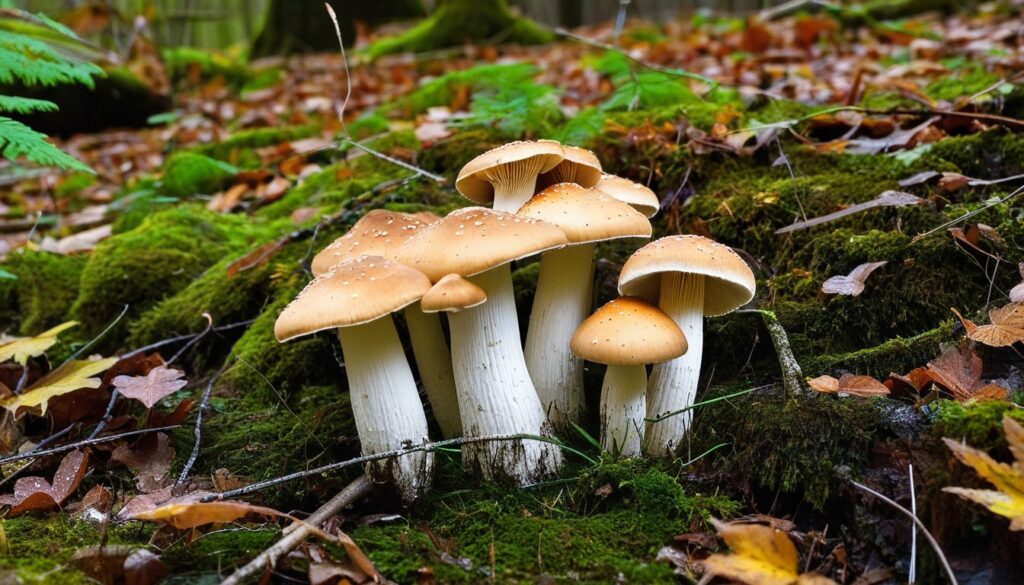Welcome to the ultimate guide to Maryland mushrooms! If you’re a fan of foraging, cooking, or just learning about new and exciting ingredients, you’re in the right place. In this comprehensive guide, we will dive into the world of Maryland mushrooms, giving you the information you need to get started on your own mushrooming journey.
Whether you’re a seasoned forager or a beginner, this guide has something for everyone. From identifying different types of Maryland mushrooms to learning the best harvesting techniques, we’ve got you covered. Plus, we’ll explore the incredible culinary potential of these regional treasures, as well as their potential health benefits and ecological significance.
Key Takeaways:
- Learn about the diverse species of Maryland mushrooms
- Discover essential tips and tricks for identifying mushrooms
- Understand sustainable harvesting practices
- Explore delicious cooking techniques and recipes
- Discover the potential health benefits of Maryland mushrooms
The Diversity of Maryland Mushrooms
When it comes to mushrooms, Maryland has a diverse range of species, each with its unique characteristics. From the iconic morel to the lesser-known lion’s mane, there is a mushroom for every taste. Understanding the different types of Maryland mushrooms can be helpful when identifying them while foraging and cooking. Here are some of the most common varieties to look out for:
|
Mushroom |
Description |
Flavor Profile |
|---|---|---|
|
Morel |
Easily identifiable due to their honeycomb-like cap and hollow stem, morels are one of the most sought-after mushrooms in Maryland. They are typically found in wooded areas and open spaces in early spring. |
Nutty, earthy, and slightly smoky |
|
Chanterelle |
These mushrooms have a distinctive trumpet-like shape and a bright orange or yellow color. They grow in clusters near trees and can be found in the summer months. |
Earthy, fruity, and slightly peppery |
|
Lion’s Mane |
Named for its shaggy white appearance resembling a lion’s mane, this mushroom is becoming increasingly popular in Maryland. They grow on dead or dying hardwood trees in the fall and winter. |
Sweet, delicate, and slightly seafood-like |
|
Oyster |
Oyster mushrooms have a flat, oyster-like cap and a delicate stem. They grow in clusters and are found on dead logs and trees in the summer and fall. |
Mild and slightly sweet, with a slight hint of anise |
These are just a few examples of the diverse array of mushrooms found in Maryland. Other popular species include the shiitake, maitake, and porcini. Whether you’re a seasoned forager or a beginner, exploring the different varieties of Maryland mushrooms is sure to be a fascinating and delicious adventure.
Identifying Maryland Mushrooms: A Beginner’s Guide
If you’re new to mushroom foraging, don’t worry! Getting started is easy. With a little knowledge and practice, identifying different Maryland mushroom varieties can become second nature. Here are some tips and tricks to help you get started:
1. Study your field guide
A good field guide is an essential tool for any mushroom forager. Take the time to read through your guide and familiarize yourself with the different types of Maryland mushrooms and their identifying characteristics. Look at pictures and read descriptions carefully to build a mental picture of what to look for.
2. Observe the habitat
Mushroom species are often associated with specific environmental conditions. Take note of where you find mushrooms and what type of trees or plants are nearby. Different types of mushrooms grow in different types of environments, so understanding the habitat can help you narrow down your search.
3. Examine the physical features
Pay close attention to the physical features of mushrooms. Look at the cap shape, color, and texture. Observe the size, shape, and color of the stem. Check for the presence of gills, pores, or ridges on the underside of the cap. All of these features can provide clues to identifying the species of mushroom.
4. Make a spore print
Some mushroom species have unique spore colors that can help with identification. To make a spore print, place the cap of a mature mushroom on a piece of paper or foil and cover it with a bowl or cup. Leave it for a few hours, then remove the cap to reveal the spore print. Compare the print to your field guide to help with identification.
5. Get help from experienced foragers
Don’t be afraid to ask for help from more experienced mushroom foragers. Join a local foraging group or attend a workshop to learn from others and share your own experiences. Experienced foragers can provide valuable insight and help you avoid common identification mistakes.
With these tips in mind, you’ll be well on your way to identifying different Maryland mushroom varieties in no time!
Harvesting Maryland Mushrooms: Best Practices
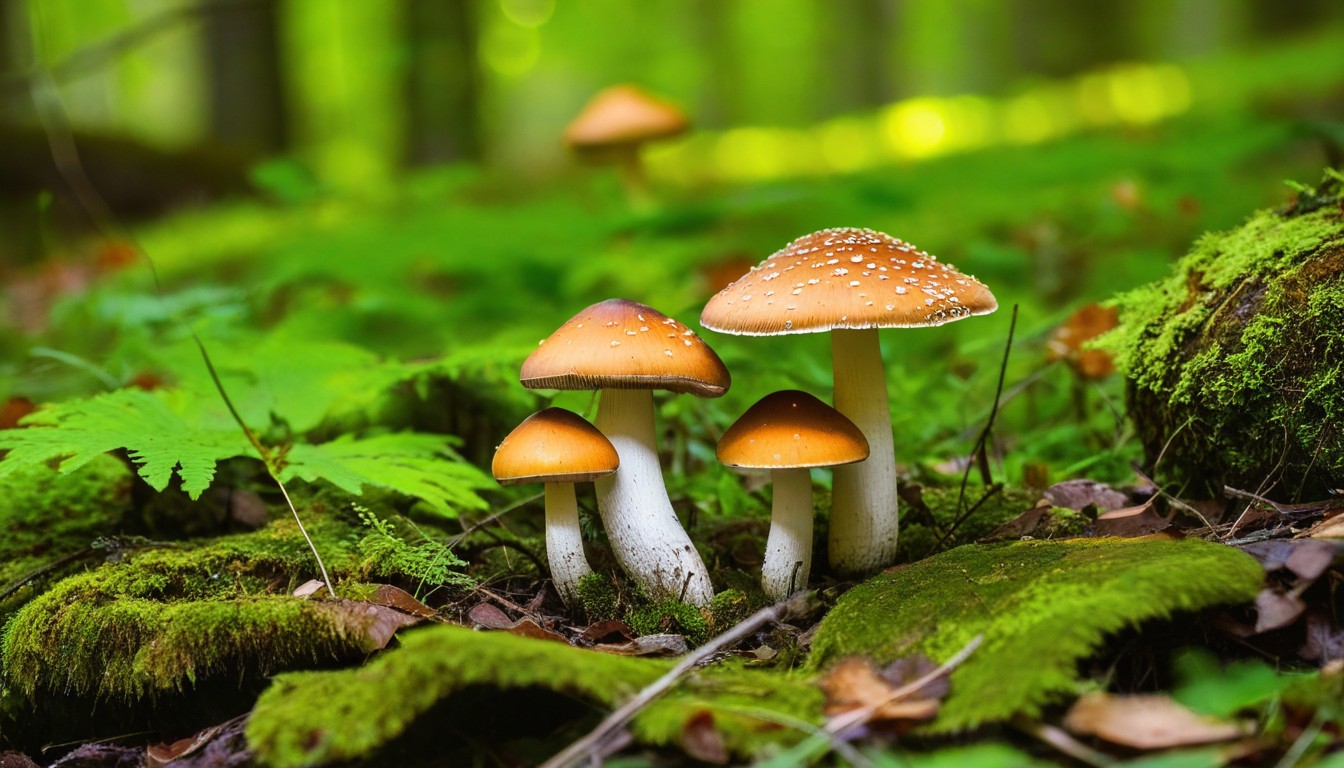
Harvesting mushrooms in Maryland requires a blend of knowledge, skills, and respect for the environment. Here are some best practices to keep in mind:
Timing is Key
Timing is everything when it comes to harvesting mushrooms. For best results, pick them in the early morning when the ground is moist and temperatures are low. This will ensure that the mushrooms are fresh and at their prime.
Use the Right Tools
Using the right tools will help you harvest mushrooms without damaging them or the surrounding environment. A sharp knife or scissors is recommended to ensure a clean cut and prevent tearing. Avoid pulling the mushrooms from the ground, as it can damage their delicate root system.
Know What to Pick
Before you start harvesting, make sure you know what mushrooms are safe to pick and which ones to avoid. Familiarize yourself with the characteristics of the mushrooms you are targeting, and avoid any with questionable colors, textures, or odors.
Be Respectful of the Environment
When harvesting mushrooms, it’s crucial to be respectful of the environment. Avoid stepping on other plants or disturbing the soil, and only take what you need, leaving enough for others and for the ecosystem to thrive. Remember that mushrooms are an essential part of the Maryland ecosystem, and over-harvesting can have long-term consequences.
Get Permission
If you plan to harvest mushrooms on private land, it’s important to get permission from the landowner first. Many public lands also have regulations regarding mushroom foraging, so make sure to check local rules before heading out.
By following these best practices, you can enjoy a bountiful harvest of delicious Maryland mushrooms while preserving the environment for future generations to enjoy.
Cooking with Maryland Mushrooms: Flavorful Delights
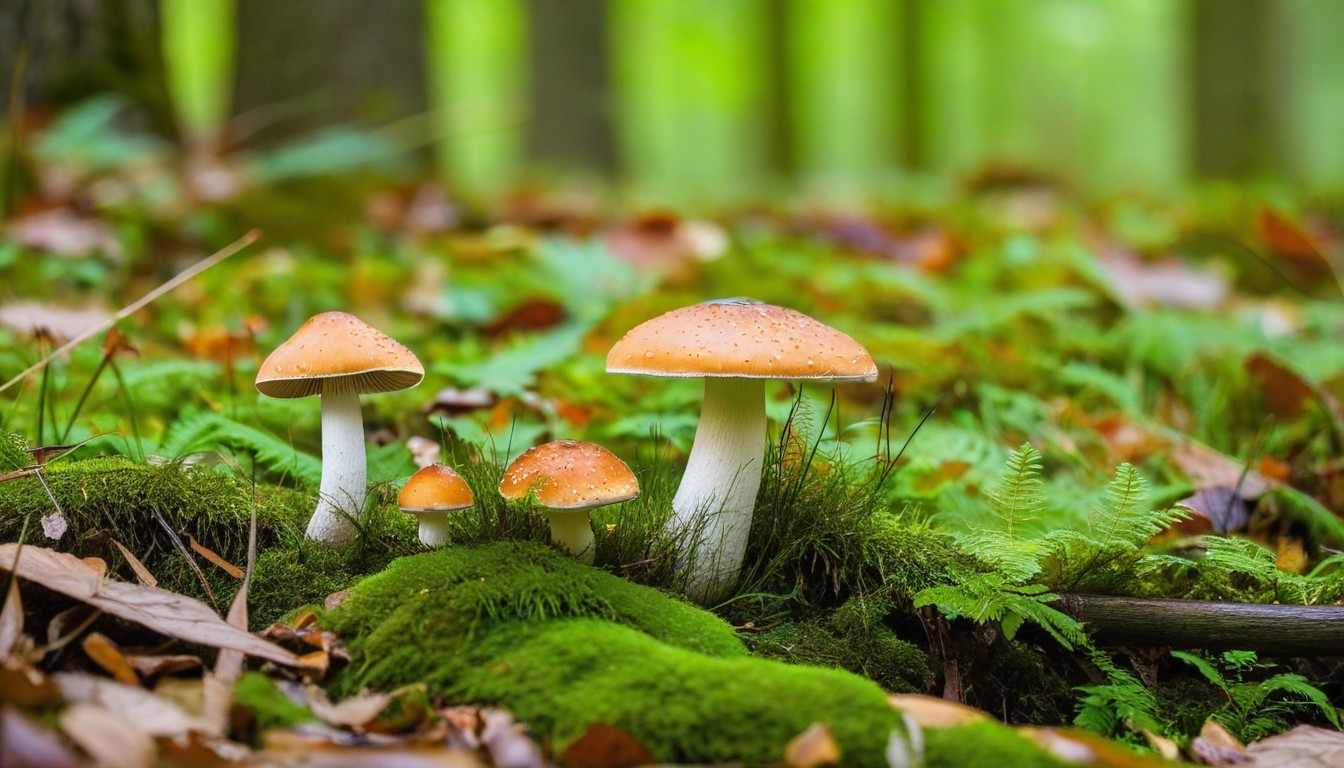
When it comes to cooking with Maryland mushrooms, the possibilities are endless. From the meaty and robust flavor of portobellos to the delicate and earthy taste of chanterelles, these regional delicacies add depth and personality to any dish.
Techniques for Cooking Maryland Mushrooms
The key to making the most of Maryland mushrooms is choosing the right cooking technique to complement their unique flavors and textures. Here are some popular methods:
- Sautéing: Quickly cook sliced mushrooms in a pan with butter or oil for a simple and delicious side dish.
- Roasting: Roasting brings out the natural sweetness and intensifies the earthy flavor of mushrooms. Perfect for adding depth to pasta dishes or salads.
- Grilling: Robust mushrooms like portobello are perfect for the grill, adding a smoky flavor and a meaty texture to your dishes.
- Braising: Braising mushrooms in a flavorful liquid like wine or broth creates a delectable, tender dish that pairs well with meats or hearty grains.
Recipes Featuring Maryland Mushrooms
Ready to try your hand at cooking with Maryland mushrooms? These mouthwatering recipes are sure to delight:
|
Recipe |
Description |
|---|---|
|
Wild Mushroom Risotto |
A creamy and decadent dish featuring a variety of Maryland mushrooms, perfect for a cozy weeknight dinner. |
|
Roasted Mushroom and Gouda Grilled Cheese |
A hearty and satisfying sandwich that highlights the rich, smoky flavor of grilled portobello mushrooms and creamy Gouda cheese. |
|
Mushroom and Lentil Shepherd’s Pie |
A vegetarian twist on a classic dish, packed with flavorful Maryland mushrooms and protein-rich lentils. |
“Mushrooms are like little sponges, absorbing all the delicious flavors of the dish they’re in. They’re so versatile and add an extra layer of depth to any meal.” – Chef Michael Voltaggio
Don’t be afraid to experiment and incorporate Maryland mushrooms into your favorite recipes. With their rich, complex flavors and numerous health benefits, they are a must-try ingredient for any home cook or culinary enthusiast.
Health Benefits of Maryland Mushrooms
Maryland mushrooms aren’t just delicious – they’re also incredibly good for you! Incorporating these regional treasures into your diet can provide a range of health benefits.
First and foremost, Maryland mushrooms are an excellent source of protein and are low in calories, making them a great option for those looking to maintain a healthy weight. They are also loaded with essential nutrients, such as potassium, copper, selenium, and vitamin D.
One of the most significant health benefits of Maryland mushrooms is their immune-boosting properties. They contain beta-glucans, which have been shown to enhance the immune system’s response to infections and diseases.
Additionally, Maryland mushrooms have anti-inflammatory properties, making them an excellent option for those dealing with conditions such as arthritis. They are rich in antioxidants, which help protect the body against harmful free radicals that can cause cell damage and lead to chronic diseases.
If you’re looking to support your cardiovascular health, Maryland mushrooms can help. They contain compounds that have been shown to lower cholesterol levels and reduce the risk of heart disease.
|
Health Benefit |
Maryland Mushroom Type |
|---|---|
|
Immune-boosting properties |
Shiitake, Maitake |
|
Anti-inflammatory properties |
Chaga, Reishi, Lion’s Mane |
|
Antioxidant content |
Matsutake, Hen of the Woods |
|
Cardiovascular health |
Portobello, Oyster |
Whether you’re dealing with a specific health concern or simply looking to boost your overall well-being, incorporating Maryland mushrooms into your diet is an excellent choice. So why not try adding them to soups, stews, or stir-fries for a delicious and nutritious twist on your favorite meals?
Mushrooms and the Maryland Ecosystem
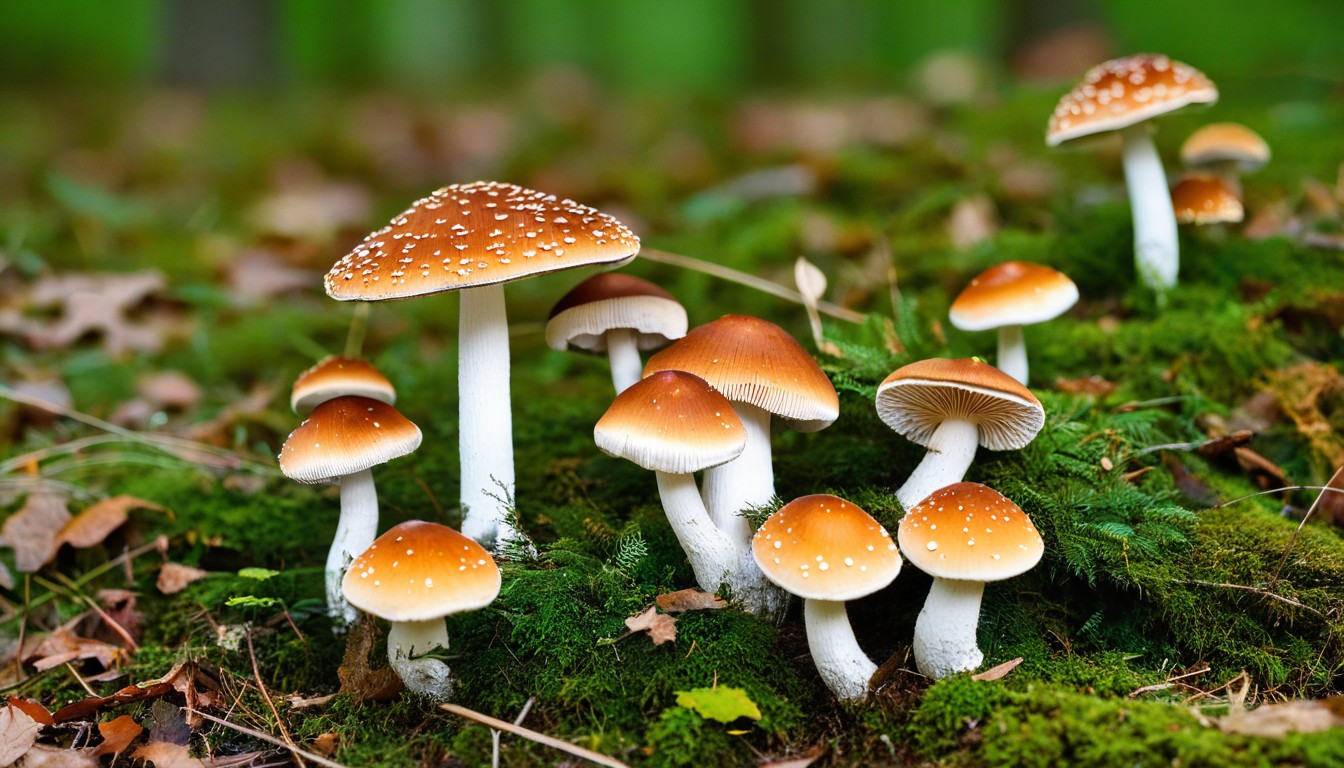
Mushrooms may seem like mere fungi, but they play a crucial role in the Maryland ecosystem. In fact, they form a complex network of relationships with other plants and animals, serving as decomposers, mutualists, and even parasites.
Perhaps the most well-known role of mushrooms is as decomposers. They break down dead organic matter, such as fallen leaves and wood, and recycle it back into the soil. This helps to maintain soil fertility and supports the growth of new plant life.
But mushrooms also form mutualistic relationships with certain trees and plants. For example, mycorrhizal fungi form connections with the roots of trees, providing necessary nutrients in exchange for carbohydrates. This mutually beneficial relationship supports the growth and health of both species.
Some mushrooms are also parasites, feeding on living trees or other plants. Although this may seem detrimental, it can also have positive effects. For example, the parasitic lobster mushroom can help control the spread of invasive plant species in Maryland by attacking their roots and inhibiting their growth.
Mushrooms and Wildlife in Maryland
Mushrooms play an important role in the diet of many animals in Maryland’s ecosystem. Deer, squirrels, and even insects feed on certain types of mushrooms. Some species of mushrooms also serve as hosts for insects, providing a habitat for their eggs and larvae.
But mushrooms also have a more indirect impact on wildlife. By breaking down dead organic matter and cycling nutrients back into the soil, mushrooms support the growth of new plant life. This in turn provides food and habitat for a wide variety of animal species.
Mushrooms and Human Activity in Maryland
Unfortunately, human activity can have a negative impact on Maryland’s mushrooms and their ecosystem. Clearing land for development or agriculture can destroy the natural habitat of many mushroom species, making it difficult for them to survive and reproduce.
Additionally, pollution and invasive species can have detrimental effects on the health of Maryland’s mushrooms. The use of pesticides and fertilizers can harm not only the mushrooms themselves but also the wildlife that relies on them for food. And invasive species can outcompete native mushrooms, reducing their populations and disrupting the delicate balance of the ecosystem.
Protecting Maryland’s Mushrooms
Protecting Maryland’s mushrooms and their ecosystem requires a concerted effort from all of us. This means minimizing our impact on natural habitats, reducing pollution and pesticide use, and promoting the growth of native plant species.
It also means respecting the role that mushrooms play in the ecosystem by avoiding over-harvesting and being mindful of their ecological importance. By taking a holistic approach to environmental stewardship, we can help ensure that Maryland’s mushrooms continue to thrive for generations to come.
Maryland’s Mushroom Foraging Community
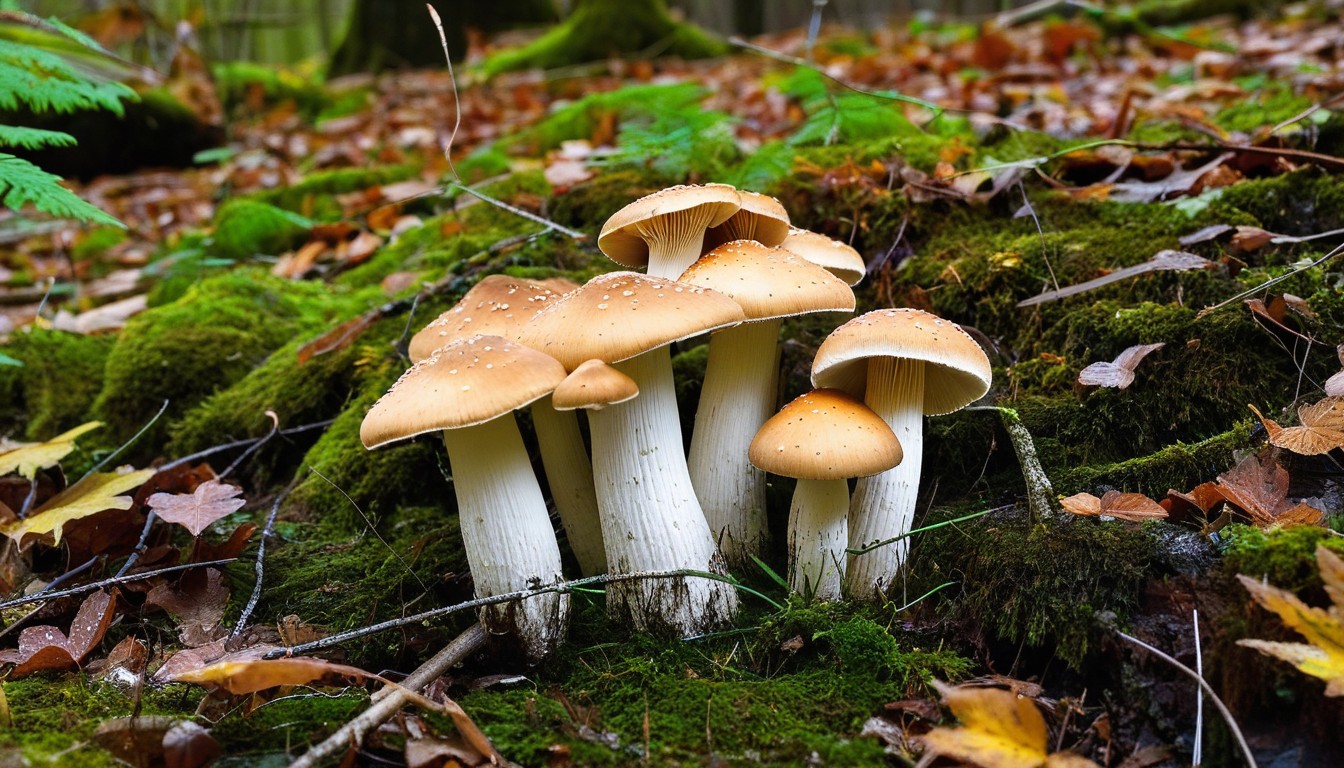
If you’re looking to connect with fellow mushroom enthusiasts, the Maryland mushroom foraging community is a great place to start. From organized foraging events to online forums and social media groups, there are plenty of opportunities to learn, share knowledge, and connect with like-minded individuals.
One popular group is the Maryland Mycological Society, which offers a variety of educational programs, foraging events, and workshops. Their website provides a wealth of resources, including a mushroom identification database, mushroom-related news and events, and a discussion forum for members.
Another great resource is the Facebook group “Maryland Mushroom Hunters”, with over 1,000 members dedicated to sharing tips, photos, and information about mushroom foraging in Maryland.
Whether you’re a seasoned forager or just starting out, joining a local community can provide valuable knowledge and insights, as well as a chance to explore the diverse world of Maryland mushrooms with fellow enthusiasts.
Conclusion
As we come to the end of this ultimate guide, we hope you have gained a newfound appreciation for the world of Maryland mushrooms. Whether you’re a seasoned forager or a curious beginner, these regional treasures offer endless possibilities for exploration and flavor.
Remember to always respect the environment and follow best practices for sustainable harvesting. With the knowledge you’ve gained in this guide, you can confidently identify various species and create delicious dishes in the kitchen.
Happy Mushroom Hunting!
From their ecological significance to their potential health benefits, mushrooms are a fascinating and essential component of the Maryland ecosystem. And with a vibrant mushroom foraging community in the region, there are endless opportunities for learning, sharing experiences, and connecting with like-minded enthusiasts.
So, what are you waiting for? Get out there and explore the diverse world of Maryland mushrooms!
FAQ
Can all Maryland mushrooms be eaten?
No, not all Maryland mushrooms are edible. Some mushrooms can be toxic or even deadly if consumed. It is essential to have proper knowledge and expertise or consult with an expert before consuming any wild mushrooms.
How can I differentiate between edible and poisonous mushrooms?
Differentiating between edible and poisonous mushrooms can be challenging. It is best to rely on expert identification or consult local mushroom foraging groups or resources for guidance on safe species to consume.
Are there any specific seasons for mushroom foraging in Maryland?
Yes, mushroom foraging seasons can vary depending on the species. Generally, spring and fall are excellent times to find a variety of mushrooms in Maryland. However, it is crucial to research the specific species you are interested in and understand their preferred growing seasons.
Can I store the mushrooms I find during foraging?
Yes, you can store mushrooms you find during foraging. It is recommended to store them properly in a cool, dry place, such as a refrigerator, to maintain their freshness and quality.
Are there any regulations or permits required for mushroom foraging in Maryland?
In Maryland, there are no specific regulations or permits required for personal, non-commercial mushroom foraging. However, it is essential to respect private property rights and any applicable laws or restrictions in public areas.
Can I cultivate my own mushrooms in Maryland?
Yes, you can cultivate your own mushrooms in Maryland. There are various methods and techniques available for home mushroom cultivation, including growing kits, outdoor patches, and indoor setups. Resources and guides are available to help you get started.
Are there any poisonous look-alike mushrooms in Maryland?
Yes, there are poisonous look-alike mushrooms in Maryland. It is crucial to thoroughly research and educate yourself on identifying safe species and distinguishing them from potentially harmful or toxic varieties.
Can I bring my dog or pet while mushroom foraging in Maryland?
It is recommended to leave your pets at home while mushroom foraging in Maryland. Some mushrooms can be toxic to animals, and allowing them to roam freely in search of mushrooms can pose a risk to their safety.
Can I sell the mushrooms I find during foraging?
Selling mushrooms that you find during foraging can be subject to certain regulations and permits, especially if it is for commercial purposes. It is best to consult with local authorities or agricultural agencies to understand any requirements or restrictions before engaging in selling wild mushrooms.

